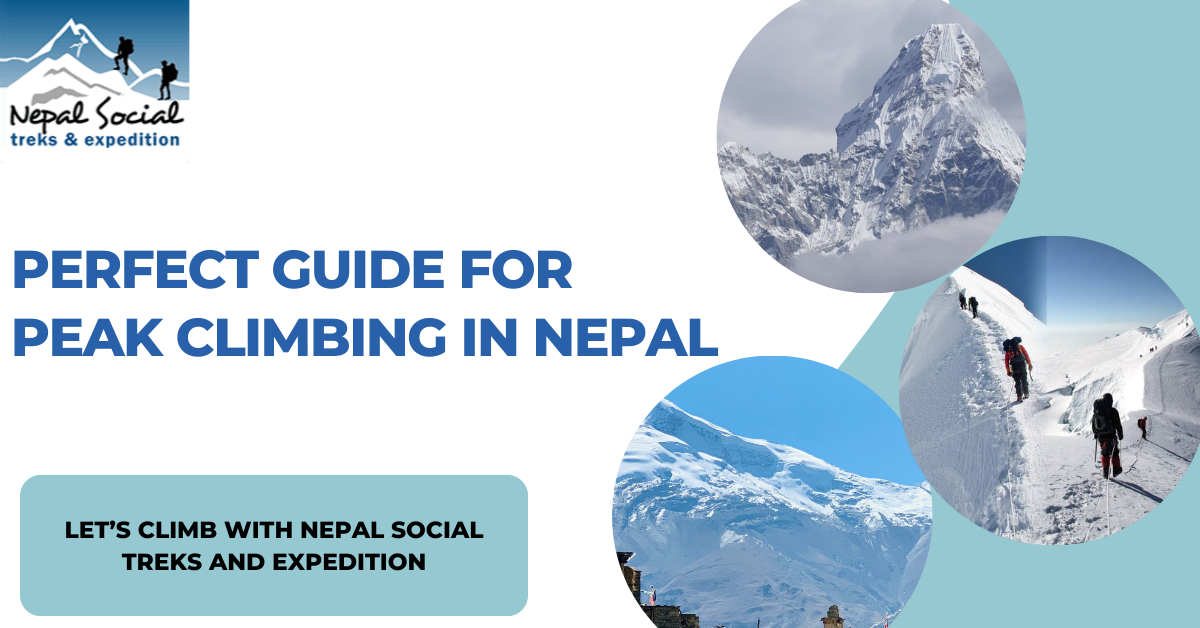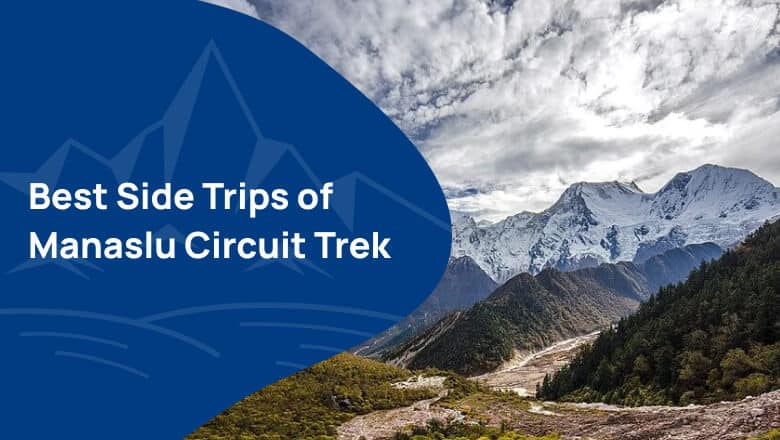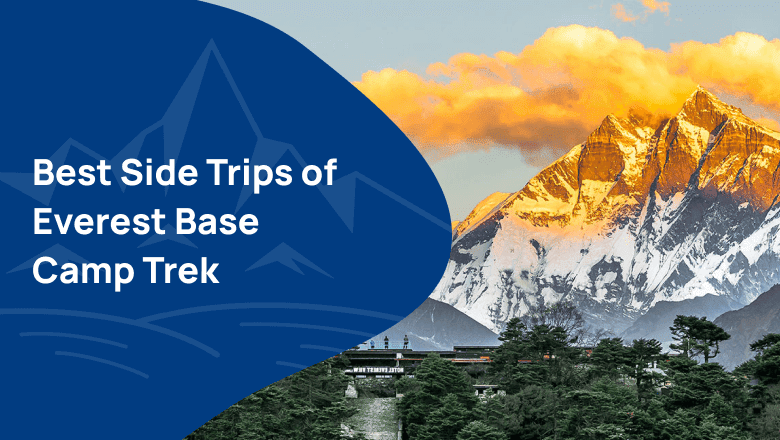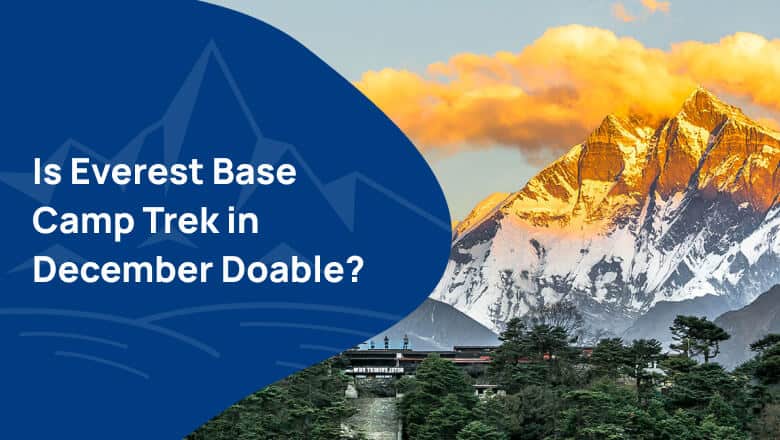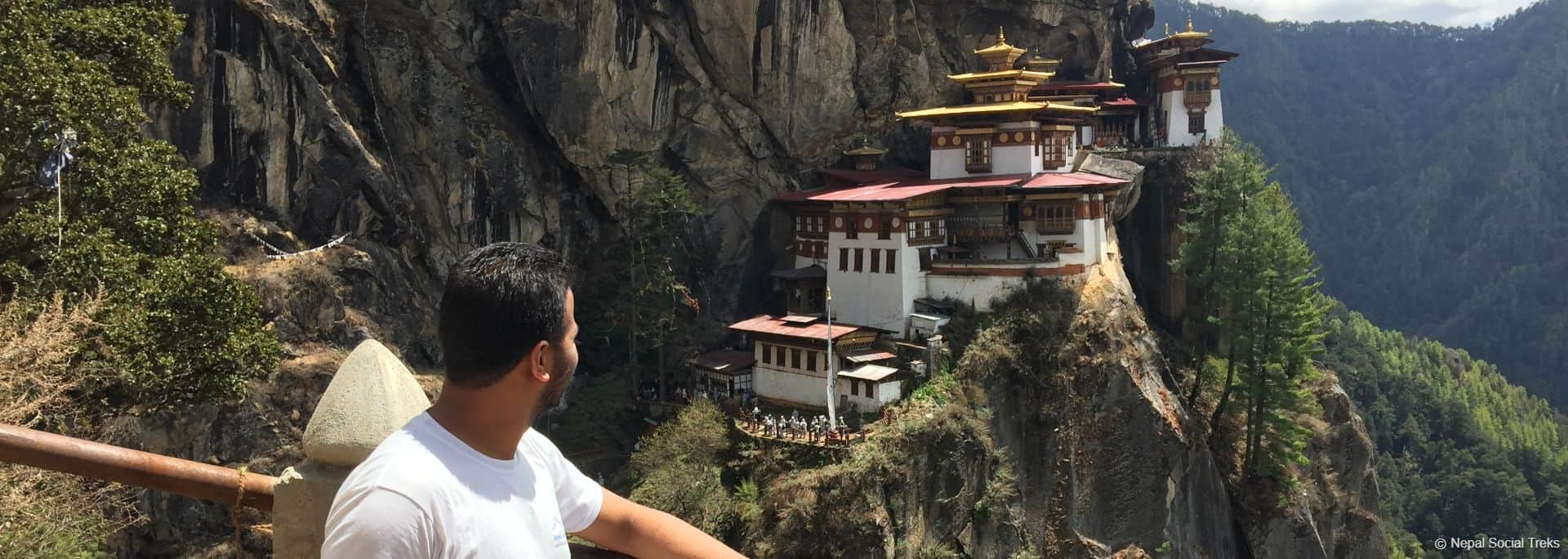Contents
- Introduction
- History of Peak Climbing in Nepal
- Peaks over/below 7000 meters
- Is Peak Climbing in Nepal for Beginners?
- Best Season for Peak Climbing in Nepal
- What sort of activities are available during the peak climbing season?
- Difficulties and Challenges in Peak Climbing in Nepal
- Permits required for Peak Climbing in Nepal
- Preparation for Peak Climbing in Nepal
- Is Peak Climbing in Nepal as Dangerous as it Sounds?
- Accommodation and Meal
- Guides and Porters
- Gears and Equipment
- Are there any age restrictions for peak climbing in Nepal?
- What does Grading in Peak climbing in Nepal mean?
- Popular Peak Climbs in Nepal
- Island Peak Climb (Imja Tse)
- Lobuche Peak Climb
- Yala Peak Climb
- Chulu East Peak Climb
- What are the environmental considerations and Leave No Trace principles that climbers should follow in Nepal?
- Is there any telephone accessibility while Peak Climbing in Nepal?
- Is insurance necessary while Peak Climbing in Nepal?
- How does peak climbing contribute to the local economy and communities in Nepal?
- Expert’s Advice for Peak Climbing in Nepal
Introduction
Peak climbing in Nepal has been a popular adventure sport for thrill seekers for a very long time. Located at the base of the Great Himalayas, Nepal offers a variety of activities, and peak climbing is the most adventurous and thrilling of all. Having home to many such peaks over 6ooo meters, Nepal is the ultimate destination for Peak Climbing. After mountain expeditions peak climbing is the most popular adventurous activity in Nepal.
Peak Climbing in Nepal is a challenging but equally rewarding adventure. It is considered less intense than a Mountain expedition, which demands much more physical and mental strength. Nepal offers a variety of peaks that climbers can choose from, including difficult climbs, technical climbs, and easy climbs, according to the skill level and experience of climbers.
History of Peak Climbing in Nepal
The history of Peak climbing in Nepal officially began in 1949 A.D. when Nepal opened its doors to the outside world. The first commercial trek was organized by a British diplomat and Lieutenant Colonel James Owen Merion Roberts. Since then, Nepal has witnessed several historic Peak climbs and considerable achievement. Nepalese peaks have been host to innumerable wins and tragedies, ranging from the first ascent of Annapurna to winning over the world’s 14 highest peaks over 8000 meters. These success stories supported the rapid increase in Mountain climbing in Nepal. The decade of 1950–60 is also considered a golden age of Peak Climbing in Nepal.
On May 29, 1953, Mr. Tenzing Norge and Sir Edmund Hillary made history when they Successfully ascended Mount Everest (8,848 meters). Some other famous peak climbs include the climb of the Northeast ridge of Mount Everest, the Southwest face of Ama Dablam, and the South face of Lhotse. The history of Peak Climbing in Nepal is a tribute to the spirit of exploration and adventure. From the beginning of exploration by intrepid explorers to present-day commercial climbing peaks of Nepal, they continue to attract and inspire climbers from various corners of the world.
Peaks over/below 7000 meters
Peaks over 7000 meters
There are a lot of beautiful peaks in Nepal; 72 of them are between 7000 and 8000 meters high. For a variety of reasons, not all of them are climbable. Below is a list of some of the most well-known peaks over 7000 meters that can be climbed in Nepal.
- Mount Everest (8,8848 meters)
- Mount Kanchenjunga (8,586 meters)
- Mount Manaslu (8,163 meters)
- Mount Pumori (7,145 meters)
- Mount Baruntse (7,125 meters)
- Mount Himlung (7,126 meters)
Peaks below 7000 meters
There are more magnificent peaks in Nepal than just Mount Everest and Kanchenjunga. Nepal is home to both formidable peaks over 7,000 meters and peaks below 7000 meters, which are regarded as easier than summits over 7000 meters. These are a few of Nepal’s well-known peaks below 7000 meters.
- Mera Peak (6,461 meters)
- Island Peak (6,173 meters)
- Lobuche East Peak (6,119 meters)
- Pisang Peak (6,091 meters)
- Chulu East Peak ( 6,584 meters)
- Chulu West Peak (6,419 meters)
Is Peak Climbing in Nepal for Beginners?
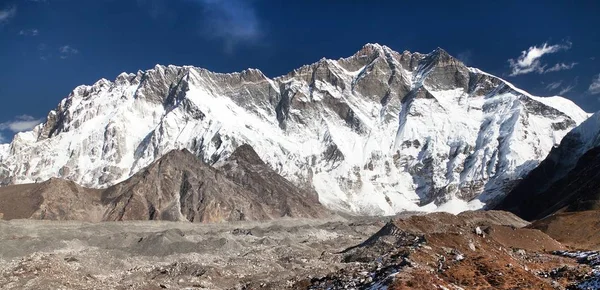
If you are one of those curious adventure-seekers and thrill lovers, peak climbing is one of the best activities for you. And it is natural for you to have questions like, “Is peak climbing in Nepal safe for beginners?” Yes, if it is done with proper guidance and training. Peak climbing requires very intense physical and mental preparation, along with proper guidance from experienced guides. The selection of peaks to climb determines the success of the adventure for novice climbers. So here’s a list of some suitable peak climbs for beginners, which has no shortage of awe-inspiring moments with proper challenge and toughness. After all, “The best view only comes after the hardest climb.”
Mera Peak
Requirements of less equipment and alpine techniques to climb make Mera Peak suitable for beginner-level climbers. It’s a traditional uphill walk with just mountaineering boots and crampons on. Climbing Mera Peak requires a little practice of walking with your crampons on, but once you get the hang of it, you will start getting comfortable with the rest of your journey. From base camp to the summit, you will be walking on ice and snowy surfaces, on which you will require guidance and training from experts.
Island Peak
Island Peak climb is also suitable for novice climbers. It is graded as a semi-technical climb, which means it requires a little bit more equipment and climbing techniques. It is slightly shorter than Mera Peak but the final push to the summit is slightly demanding, with an almost 90-degree vertical climb. Having said that once you reach the summit it will Island Peak will reward you with the joy of accomplishment and heavenly views of peaks all around it.
Lobuche East Peak
Lobuche East Peak is another popular peak climb suitable at the same time challenging for beginner climbers. It is also graded semi-technical, the same as Island Peak. The climb is mostly on snowy and rocky surfaces and the summit is a bit narrow, which demands more effort. The view of Everest gives unreal satisfaction once you reach the summit.
Chulu West Peak
Chulu West Peak demands physical and mental perseverance, as it is also graded as a semi-technical peak climb. It is suitable for climbers having beginner and intermediate levels of skill and experience. This climb is mostly on ice and snowy terrain from base to summit, which may be a little difficult for beginners if not done with the proper guidance of experts.
Pisang Peak
Pisang Peak is also graded semi-technical as Island or Lobuche Peak climbs but it requires a little bit of technical skill during the climb to summit. You need to have a proper fitness level, as with any other peak climb but is very achievable by beginner-level climbers.
Best Season for Peak Climbing in Nepal
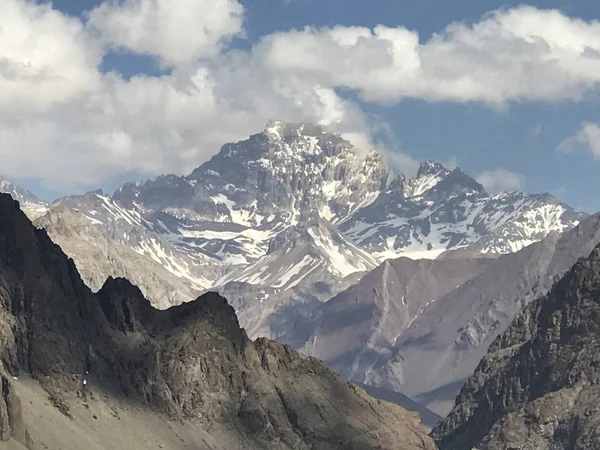
The best seasons for Peak Climbing in Nepal are Spring( March-May) and Autumn (September–November). These phases of the year are neither too hot nor too cold. Climbers be they beginner, intermediate, or expert, these two seasons provide the best peak climbing adventure with less difficulty throughout the journey.
Spring (March-May)
Spring is one of the best times to climb peaks and for all trekking activities. The views become clear as crystal and the weather is bearable and mild during spring. There is less possibility of rain and fluctuations in temperature are very low. The only issue in this season can be the wind speed, which may give climbers some problems depending on the location.
Autumn (September-November)
The Autumn season is also one of Nepal’s best seasons for peak climbing. The weather this time is cool enough for climbing and clear enough for natural views. There is very little chance of rain, and the temperature might drop a little depending on the time of day or location.
What sort of activities are available during the peak climbing season?
During peak climbing in Nepal, there are many other activities that climbers can engage themselves in, depending on their level of experience and skill. Some of the activities include:
- Rock climbing: This is one of the most popular activities to engage in. It involves using special kinds of gears and techniques that can be useful while ascending towering peaks.
- Bouldering: This is a form of rock climbing that is done on short routes without using any special gear or equipment.
- Ice Climbing: It is climbing on frozen water cliffs and ice cliffs using specialized ice climbing gears and techniques.
Difficulties and Challenges in Peak Climbing in Nepal
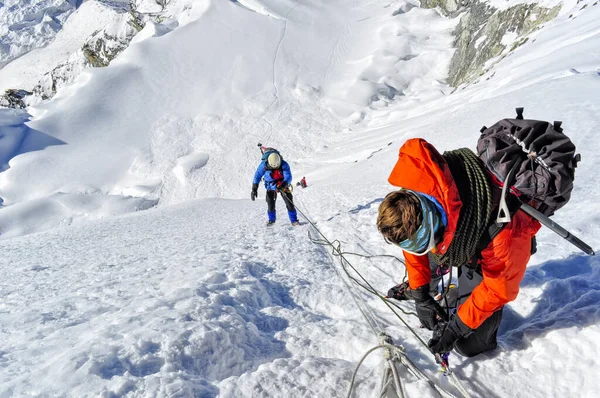
The thrill and allure at the summit of the peak climb are beyond doubt. But to conquer the mighty peaks, there are several difficulties and challenges that the climbers must overcome and counter. From rapid weather shifts to acquiring high technical skills, climbers must think about many such difficulties. Here are some difficulties that lie in peak climbing in Nepal:
Altitude sickness
Also known as the Pathological effect of high altitude on the human body, this is one of the most common difficulties that a climber must face and overcome. It is mostly caused by low levels of oxygen and reduced air pressure in high altitudes. From mild headaches to severe life-threatening conditions, its symptoms vary depending on the individual. Symptoms of altitude sickness are like:
- Headache
- Dizziness
- Nausea
- Shortness of breath
- Decrease in appetite
While these are mild to moderate symptoms that can be cured without serious medical treatment, some severe conditions require immediate medical treatments. These serious symptoms include:
- Losing muscle control in arms and legs
- Regular cough and chest congestion
- Discoloration of skin and lips
- Fluid buildup in the lungs
The prevention and treatment of these conditions must be done at a slow pace, depending on the seriousness of the symptoms. Some preventive measures and techniques include:
- Acclimatization: Gradual ascent is a very effective measure to prevent altitude sickness. Climbing at the proper pace and getting ample rest during the climb can help prevent altitude sickness.
- Medication: Many drugs like Acetazolamide can reduce and prevent the effect of acute mountain sickness (AMS).
- Hydration: Drinking plenty of water frequently can help prevent altitude sickness.
- Controlled breathing: Having control of breathing gives the sensation of calm, which gives mental strength as well as physical advantage.
Uncertainty of weather
The unpredictability of weather is one of the most notable challenges that climbers must face. Bright, sunny mornings can rapidly transform into heavy, cloudy afternoons, which causes difficulty in visibility and fluctuations in temperature. This rapid change in weather can call for other challenges, like:
- Divert climbers from their intended route
- Increase in risk of snowfall and avalanches
- Severe medical conditions like hyperthermia
The control of the weather is beyond human control but measures to take after it is in the human domain. Flexibility and knowing what to do afterward can help during such extreme situations. Taking advice from expert and experienced climbers and acting according to the advice is the key to facing unpredictable weather.
Difficult and changing terrain
Peak climbing in Nepal offers a wide range of terrains from base to summit. These rough and rugged terrains establish an arduous journey. Climbers have to keep in mind that they have to face and adapt according to the terrain and some of it may demand extreme physical effort to surpass. Some of the terrains include:
- Icy snowy slopes
- Rock faces
- Hidden crevasses
- Serac fall (Block of ice formed by intersecting crevasses on the glacier)
Technical climbing difficulty
With altitude and landscape already providing such huge challenges, the technical skill required for peak climbing in Nepal is another one of them. It tests the climber’s prior preparation and skills. The technical skills that are required to reduce the difficulty of peak climbing are:
- Fixing rope sections
- Moving together
- Use of harness and pickaxe
- Skill of navigation
- Ice climbing
Permits required for Peak Climbing in Nepal
Peak climbing in Nepal requires multiple authorizations and licenses. Depending on the peak, specific permits are required. Some of the peaks require climbing permits, while others demand additional permits due to various reasons like location, conservative areas, and national parks. Obtaining all the necessary permits is a must before starting the journey. Collaborating with a registered trekking agency or climbing guide can simplify the process, as they know all the requirements. The typical permits required for peak climbing in Nepal are as follows:
- Nepal Mountaineering Association (NMA) permit: NMA is in charge of issuing permits for climbing and overseeing mountaineering activity in Nepal.
- Trekking permit: Most peak climbing requires hiking to base camp. Climbers need to obtain trekking permits from the Nepal Tourism Board or via a registered trekking agency.
- Climbing permit: Depending upon the peak, specific permits are required to attempt peak climb. The permit cost depends upon the classification of the peak, which is classified by NMA.
- Conservative area permit (if applicable): Some of the routes of peak climb go through national parks and conservative areas. In these situations, climbers need an additional permit unique to that location.
- Restricted area permit (if applicable): Certain peaks reside in restricted locations like Upper Mustang or Dolpo, climbing in these regions requires a special permit authorized by the Department of Immigration.
Preparation for Peak Climbing in Nepal
Peak Climbing in Nepal is a different adventure sport that is highly rewarding and satisfying once you reach the summit. To reach the summit, climbers need to overcome various challenges like rugged terrain, uncertain weather, fear with anxiety, and many more. Well-planned preparation is a must for a safe and successful peak climbing adventure. These preparations include physical training, mental strength, and proper packing.
Physical Training
Strength and stamina are key factors that climbers must develop in themselves for their safety. Resistance building and endurance building should be kept in mind while preparing physically. There are many exercises and trainings that climbers must get involved in before attempting peak climbing. For strength and muscle endurance climbers can practice the following exercises:
- Push-ups and Pull-ups
- Squats
- Lunges and Leg-press
- Deadlifts
- Lats pulldown
While these are training for strength and muscle endurance, improvement of the cardiovascular system, and stamina development, there are many other exercises, like:
- Swimming
- Running
- Cycling
- Short hikes
Mental Strength
Peak climbing involves not only physical strength but mental strength as well. Under harsh circumstances, having calm and composure is the most important aspect of overcoming it. Climbers must know that the situation won’t be the same and they must have the ability to quickly adapt under those circumstances. For that, there are certain things that climbers can try, like:
- Visualizing success: Mentally visualizing success can give a positive boost and self-assurance that come in handy during the journey.
- Realistic expectations: Setting realistic expectations and goals can prevent disappointment and unnecessary stress.
- Stay positive: Remain determined and focus on the progress you have made, rather than fearing difficulties.
- Trust and Belief: Trust your team and guide. Know that you are not alone; your group has your back.
- Enjoy the journey: Always remember to enjoy and appreciate the beautiful landscapes and your own experience.
Packing tips
Making your bag pack heavy is not the proper way to begin any peak climb. Carrying just the essentials and avoiding additional weights can be very helpful during the journey. Here are some packing tips that can help you comfortably complete peak climbing in Nepal:
For clothing
- Base layers: Breathable Base layers that are moisture-absorbing.
- Outer layer: Rain and wind-resistant jacket with hood.
- Trekking Pants: Trekking pants that are light, quick-drying, and have zip-off legs.
- Gloves: Mitten gloves with insulation.
- Hat: In colder weather, cover yourself with a thick beanie or a sun hat to insulate yourself from the heat.
For personal equipments
- Backpacks: a comfortable, well-fitting backpack (35–40 liters) that accommodates daily essentials, food, water, and personal items.
- Boots: Comfortable and waterproof boots with ankle support.
- Socks: Moisture-absorbing and warm socks to keep your feet dry and blister-free.
For Medications
- Prescribed medicines: Carry your prescribed drugs along with their prescription.
- Painkillers: Carry painkillers such as acetaminophen or ibuprofen since they are easily available.
- First aid kit: Contains tweezers, gauze pads, adhesive tape, and antiseptic wipes.
Ensure that you have the abilities and expertise to face the challenges you have to face during peak climbing in Nepal. To increase the possibility of your safe and successful journey, take advice from local guides and seasoned climbers.
Is Peak Climbing in Nepal as Dangerous as it Sounds?
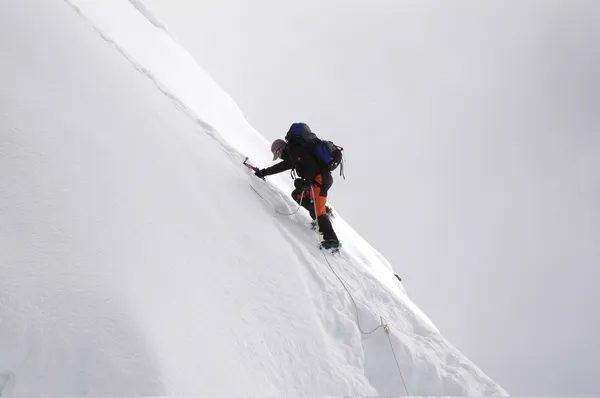
Climbing peaks over 6000m is a very challenging activity. There are many mild-to-life-threatening difficulties that climbers must face throughout the journey. Peak climbing in Nepal isn’t as dangerous as it sounds if done with proper preparation, training, and advice from experts. There are many climbers from different age groups who have successfully climbed the most harsh peaks in Nepal.
Listening to your guide and doing your research is the key to making peak climbing safe and successful. However, if you are a beginner, hiring an experienced guide, following an established route, and keeping up with the circumstances make peak climbing in Nepal safe and successful.
Accommodation and Meal
Accommodation facilities for peak climbing in Nepal vary from tea houses, lodges and campsites. Tea houses and lodges usually found in villages along the route offer comfortable resting places after a harsh day of trekking. Rooms typically include twin beds and shared bathrooms. After base camp climbers are likely to establish camps at various camping sites. Camping typically consists of tents and sleeping in sleeping bags and mats. Climbers may set up high camps near the summit for climbs requiring multiple days. These settlements are very basic with just tents and makeshift shelters being the sole accommodations.
Food and Drinks
Up to base camp at every peak, climbers can enjoy many local delicacies. On today date food services and the number of items have been increased. Several teahouses have an extensive menu book that contains a wide range of food and drinks with price, for breakfast climbers can enjoy oatmeal, butter jam, french toast, eggs, coffee, bread, etc. Lunch and dinner include the famous Nepali dish dal bhat and other dishes like noodles, soups, thukpa, momos (dumplings), and roti with curries.
Depending upon location and venue, beverages include tea, coffee, cold drinks, and beers. But it is best to stick with warm water regardless availability of other drinks. It is strongly recommended that climbers avoid alcoholic drinks as they can cause altitude sickness and other medical conditions.
Despite the availability of many such teahouses and lodges climbers have to carry some light snacks themselves for a smooth and trouble-free journey. Carrying high-energy snacks like protein bars, dry fruits, nuts, chocolates, and granola bars.
Climbers are recommended to intake well-balanced meals and drink ample amounts of warm water during the journey to ensure the energy and endurance required to face the difficulties of peak climbing in Nepal. Climbers should also be aware of their nutritional requirements, preferences, and any potential food allergies or sensitivities.
Food waste management
Unfortunately, there isn’t a proper policy about waste management throughout the route. This has caused a significant amount of harm to the existing environment along the route. This mostly occurs in the prime season of peak climbing in Nepal. Climbers have to be responsible enough and dispose of the garbage and waste at designated disposal sites.
Do peak climbing trips cater to vegetarian, vegan, or other dietary preferences?
Of course, vegetarian, vegan, and other dietary preferences are accommodated in peak climbing in Nepal. The degree to which these desires may be met, however, may differ based on things like how far away the road is from civilization and the amenities offered along the way.
It would be better if climbers discussed their food requirements and preferences with the trekking agency before starting the journey. Additionally, carrying some essential snacks or supplementary food items can provide peace of mind and ensure you have suitable options throughout the journey.
Guides and Porters
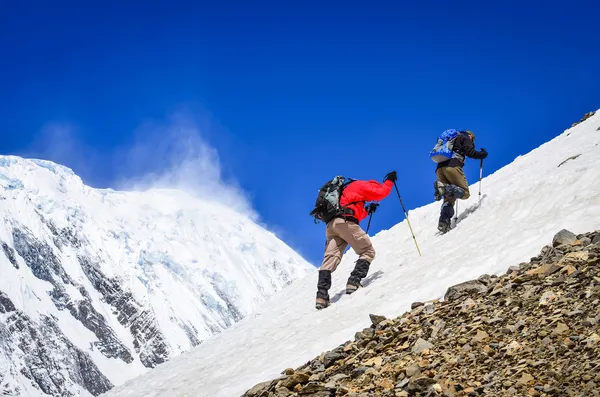
Whether you are a beginner or an experienced climber, the assistance of a guide and porter is always necessary in peak climbing in Nepal. Difficult terrain, high altitude, and the technical nature of many peaks demand experienced guides and porters. There are many things that a climber must consider before taking the services of guides and porters. Guide licensed by the Nepal Mountaineering Association (NMA) or Trekking Agencies Association of Nepal (TAAN), should be hired. The hired guide should be considerably experienced with peak climbing and fluent in communication mainly in English. It is always better to take recommendations from trekking agencies and not be haste.
While hiring porters it is advisable to discuss the distribution of weight. Make sure that none of the porters are overloaded which can cause a fatal accident. Porter must be efficient and skilled in handling tools and gears along with clear communication with the climber and guide. And most important of all ensure the insurance coverage for both guides and porters.
Hiring Guide with Nepal Social Treks
At Nepal Social Treks, we provide you with some experienced local guides. Our expert guides have been to the relevant areas many times. All the guides are flexible, experienced, and authorized by the Government of Nepal.
Our guides are professionals in mountaineering with extensive knowledge of the Himalayas, more than 5 years of experience with at least 3 times summit of Mount Everest, and are trained and assessed by the International Federation of Mountain Guides Association (IFMGA) or Nepal Mountaineering Association (NMA) with many years of Mountaineering experience in the world’s highest mountains.
Gears and Equipment
Proper gear and equipment are required for a safe and successful journey to the summit and back. These gears play a huge role in climbing challenging terrains. The number of gears and equipment depends upon the peak and its difficulty. Here we have mentioned the most common and necessary gears that will help you while peak climbing in Nepal.
- Sturdy high-quality mountaineering boots with excellent ankle support and stability.
- A pair of crampons.
- Mountaineering axe with leash (Choose the right size for your height).
- Ascender depending on whether you are right or left-handed.
- Pair of carabiners that lock in a D shape and another pair that doesn’t lock.
- Neck Guard.
- Light and sturdy helmet for climbing.
- Lip balm, sunscreen, and sunglasses with SPF 20 or higher for protection of eyes and skin from intense UV rays.
- Navigation tools like maps and compasses to navigate the mountain safely.
Purchasing these gears can cost very high so climbers can rent these equipment for an affordable price, for which they can consult their respective trekking agency.
Why is personal protective equipment such as sunscreen and sunglasses crucial for peak climbing in Nepal?
Personal equipment like sunscreen and sunglasses are critical for various reasons. At high altitudes, the atmosphere is thinner and it causes less filtration in harmful UV rays. Without proper protection, you can get sunburn which can be severe. The reflective surfaces of snow and ice amplify the intensity of sunlight. Without sunglasses glaring into such light can cause snow blindness.
Prolonged exposure to sunlight at high altitudes without proper protection can lead to medical conditions like sunburn, snowblindness, and skin damage. Using sunscreen with a high Sun Protection Factor (SPF) and sunglasses helps prevent such conditions. That’s why climbers have to carry these essentials to prevent any moderate to serious medical conditions while peak climbing in Nepal.
Are there any age restrictions for peak climbing in Nepal?
The only restriction the Nepal Government has imposed on the age factor is that climbers below the age of 16 can not attempt Peak climbing in Nepal. Any climbers above the age of 16 who have the appropriate fitness and skills to climb the mighty peaks can attempt peak climbing in Nepal.
What does Grading in Peak climbing in Nepal mean?
Peaks in Nepal are graded according to their climbing difficulty. These grades consist of 4 main categories:-
- Moderate: For beginners who have no prior climbing experience.
- Adventurous: For climbers who have very little experience in trekking in high altitudes.
- Challenging: For experienced climbers who already have lots of climbing experience above 6000 meters.
- Serious: Very hard and technical even for experienced climbers.
Popular Peak Climbs in Nepal
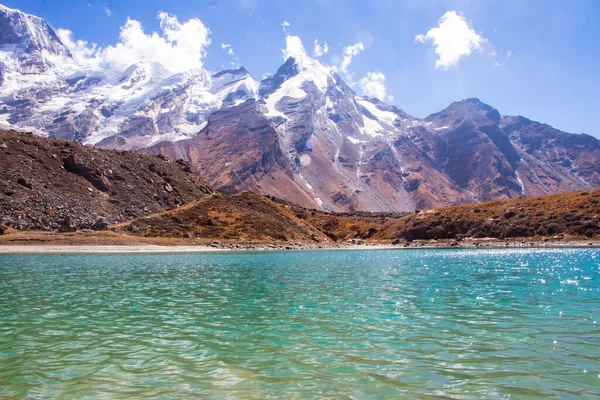
There are lots of options for peak climbing in Nepal, some of which have gained more popularity and are famous among climbers. Climbers prefer these peaks more than others due to many reasons. Some of the popular peak climbs in Nepal include:-
Mera Peak Climb
Standing at a height of 6,476 meters Mera Peak is the highest peak climb in Nepal and is also a great venue for starting your peak climbing adventure. It is situated in the isolated Hinku Valley in the Everest region and offers breathtaking views of many Himalayan giants such as Makalu, Cho Oyu, and Everest. The climb includes hiking through forests, crossing high alpine passes, and terrains full of glaciers. Despite its height, Mera Peak is technically easy even for beginners who have a good level of fitness. The challenge is primarily about stamina and endurance so having a reasonable level of fitness is necessary.
Before attempting an expedition of peaks above 8000 meters Mera Peak is considered practice, basic preparation, and acclimatizing to greater altitudes. The first ascending of Mera Peak was initiated by the first Everest climbers Sir Edmund Hillary and Tenzing Norgay Sherpa before attempting Mount Everest. Since then its popularity has gradually increased and is rising over time.
Highlights of Mera Peak
- Close-up view of the world’s six highest peaks: Makalu(8,463 meters), Cho Oyu(8,188 meters), Lhotse(8,516 meters), Kanchenjunga(8,586 meters), and Everest(8,848 meters).
- Easy Climb which is perfect for beginners looking to climb the first peak.
- Exotic plants and animals in Everest region. Glacial rivers, Rhodendron forests, waterfalls, yak pastures, and pure glacial lakes may all be found in the Hinku Valley.
- Mountainous views across ancient monasteries, temples, and beautiful lakes.
- Breathtaking scenery with less congested roads and pocket-sized settlements.
- Passing through the Sherpa communities of Paiya, Thaknak, and Khare.
- 360-degree view of the snow-covered kingdom from the summit.
Difficulty of Mera Peak Climb
Mera peak climb is not as difficult and technical as other peaks. Due to some challenging parts and glacial climb, Mera Peak is rated grade PD (Slightly Difficult) by the Alpine Grading System. The greatest challenge that Mera Peak presents is its high altitude. The difficulty can be significantly decreased with a well-accessed route plan, appropriate acclimatization, and training.
Best time for Mera Peak climb
The best time for Climbing Mera Peak is spring or fall when the beauty of this climb is most beautiful. In spring (late March-early May) the hiking path provides some of the best jaw-dropping views of the mountains, dense woods, colorful meadows, and blooming rhododendrons. The weather is warm and the days are bright and sunny with pleasant temperatures.
In Autumn (September-December) the climate begins to be dry and cold. Visibility is even more spectacular than in the spring months. The only catch is temperature starts dropping drastically during the night and high elevation. However, it is still doable with proper planning and preparation.
Is Mera Peak Climb suitable for me?
Mera Peak climb is suitable even if you are a beginner if done with proper planning and preparation. Good physical condition is required as you will be climbing in some of the most challenging circumstances. You need to be familiar with some of the tools like axes, crampons, and ropes. Previous climbing experience can be advantageous but not necessary. The daily walking duration is 5-6 hours however on the summit day you need to push it to 8-9 hours.
Island Peak Climb (Imja Tse)
Located in the heart of the Khumbu region, Island Peak stands at a height of 6,189 meters. It is a popular choice for climbers looking for their first climbing adventure. English mountaineer Eric Shipton gave the peak its name in 1951. Its remote location is surrounded by glaciers that fall from tall mountains of 7000-8000 height justifies its name Island Peak. This peak emerges from the southernmost tip of Lhotse Glacier, captivating you with its enchanting panoramic view.
Island Peak climb is also known as a training ground for higher mountain expeditions. It is the ideal peak for climbers who want to increase their experience and expertise in peak climbing since it is physically demanding without requiring technical skill. The island peak climb is a little bit challenging since it requires crossing the crevassed glaciers and the use of gears such as ladders and ropes.
Highlights of Island Peak Climb
- Amazing views of Everest, Lhotse, Nuptse, Changtse, Pumori, Ama Dablam, Chumbu, Thamserku, Kangtega, Taboche & Lobuche from Kalapatthar.
- Floras and Faunas found in Sagarmatha National park.
- Breathtaking views of Khumbu Ice Falls and Glaciers.
- Tengboche monastery, the biggest monastery in the Everest region.
- Sherpa settlements are soaked in rich Sherpa culture, tradition, and lifestyle.
Difficulty of Island Peak Climb
Island Peak Climb is considered moderately difficult. It is suitable for individuals who want to start mountain expeditions. Walking through hills and difficult terrains, including crossing glaciers, rivers, and mountain passes, makes this peak slightly difficult. The maximum altitude you will reach is 6189 meters also the climbers need to spend most of their night over the height of 3000 meters. As a result, climbers might face the problem of altitude sickness.
The average walking duration is 5-6 hours and summit day requires walking up to 12-13 hours covering a distance of around 10 miles. That’s why it is better if climbers have prior trekking experience in high altitudes. Not having prior experience can be overcome by proper training and instruction.
Best time for Island Peak Climb
Island Peak Climb is accessible all year long but it is wise to climb in spring or fall when the beauty of the trail is at its best. The sunny and warm spring weather presents a clear view of the Himalayas. Temperature rises to 15-17 degrees at day time and -10 degrees at night above 4000 meters.
Autumn is also considered the best time to climb Island Peak as the weather is dry and cool. Post-monsoon season offers a clear view of the Himalayas. It is colder than springtime but is bearable. The range of temperatures is a comfortable 0 to 15 degrees. Lows of -15 degrees at night are not unusual by the end of November.
Is Island Peak Climb suitable for me?
Island Peak is suitable for you if you have some prior trekking experience in high altitudes. Island Peak requires a good fitness level and a little bit of technical skill for climbing. Crossing glacial lakes and crevasses requires the use of tools like ladders, axes, and ropes. So if you have experience in trekking it won’t be very difficult even if you are a beginner with proper training and planning it is very much achievable.
Lobuche Peak Climb
Lobuche Peak is a stunning peak resting at 6,119m/ 20,075 feet above sea level. Situated in Solukhumbu, Lobuche Peak introduces high elevations for climbers. Lobuche Peak offers breathtaking views of Everest, Lhotse, Ama Dablam, and other neighboring peaks. This is a tough “trekking peak,” requiring mountaineering equipment such ropes, crampons, and ice ax in addition to some alpine abilities to reach the summit.
Lobuche Peak consists of two ridges Lobuche East Peak (6,119 meters) and Lobuche West Peak (6,114 meters). Lobuche East is categorized in Grade B by the Nepal Mountaineering Association (NMA) which means it is comparably easy whereas Lobuche West is known for its technical difficulty.
Highlights of Lobuche Peak climb
- Enjoying the magnificent view of different peaks of the Everest region
- Learning about long-established Sherpa Communities and cultures.
- Trek past thick forests, monasteries, and prayer flags.
Difficulty of Lobuche Peak Climb
Lobuche Peak climb has a technical route up to its peak. The trail consists of rugged terrain with rocky and steep walls which makes the journey very challenging. Climbers need to possess excellent fitness levels to face these challenges. Climbers must have some technical skills and experience in using tools like crampons, ropes, and ice axes. It is not wise to attempt this peak climb without proper guidance and physical training.
Best time for Lobuche Peak Climb
Springtime provides pleasant weather with flowering hillsides and perfect temperatures for climbing Lobuche Peak. A bright sunny day gives a clear view of the surrounding peaks and mountains. Climbers will be able to see all the breathtaking visuals of the Everest region clearly and trek to the summit more safely due to stable weather in the spring season.
Spring & Autumn is also the best time for climbing Lobuche Peak. The festive season of Autumn makes this time of year more special for climbers. This period of post-monsoon gives a much clearer view and the temperature is also suitable for trekking.
Is Lobuche Peak climb suitable for me?
If you are a beginner or don’t have any prior trekking experience in high altitude Lobuche peak climb is not recommended for you. Lobuche peak climb requires good strength and stamina with technical skill and knowledge about tools and gears. An experienced climber won’t have much difficulty while climbing Lobuche but if you are a beginner you will have a hard time.
Yala Peak Climb
Yala Peak lies in the Langtang region on the Tibet and Nepal border standing at a height of 5,732 meters. Yala Peak Climbing is an ideal location to appreciate the stunning snow-covered Himalayan ranges stretching beyond the horizon and to feel the exhilaration of reaching the summit of the Nepal Himalayas.
With some prior outdoor trek skills, anyone with little experience in trekking can easily climb the peak. In some places, axes are required to ordinate, but nothing too dangerous. The peak climbing also offers magnificent views of Langtang Lirung, Dorje Lakpa, Ganesh Himal, Naya Kanga Peak, Ganchenpo, Shishapangma, etc.
Highlights of Yala Peak Climb
- Langtang village, biggest tamang settlement.
- Stunning view of Langtang Lirung, Dorje Lakpa, Naya Kanga, and so on.
- Home of an endangered species, the Red Panda.
- Walking through lush rhododendron and bamboo forests, majestic waterfalls, monasteries
Difficulty of Yala Peak Climb
Yala Peak Climb is categorized as beginner-friendly and is graded Class F by the Alpine Grading System. Despite its lower altitude and easy routes, there are some challenges that Yala Peak Climb will present to climbers. Walking through steep slopes, rocky trails, and potentially icy conditions requires good stamina and endurance. Basic mountaineering skills such as crampons, ice axes, and rope techniques may be necessary, especially near the summit.
Is Yala Peak Climb suitable for me?
If you are a beginner or don’t have much experience with trekking in high altitudes, Yala Peak climb is not for you. Expert climbers can climb this peak without much difficulty. There won’t be challenges and problems other than basic ones like slightly difficult terrain and altitude sickness. So if done with proper preparation and training even beginners can find this peak climb suitable to climb.
Chulu East Peak Climb
Chulu East Peak lies above the Manang Valley at 6,584 meters. Surrounded by mighty peaks like Mount Dhaulagiri (8,167 meters), Mount Manaslu (8,163 meters), and Mount Annapurna (8,091 meters) Chulu East Peak is one of the most demanding and high-rated peak climbs. This remote upland area lies to the north of and in a rain shadow formed by the main Annapurna Himal. Huge glacial moraines abound etched deeply by wind erosion into fantastic pillars.
Highlights of Chulu East Peak Climb
- One of the high-rated Peak climbs.
- Passing through Gurung villages situated in the Annapurna region.
- Breathtaking panoramic view of Mount Annapurna and Dhaulagiri from the summit.
- Climbers get the opportunity to experience Gurung culture, customs, and hospitality.
Difficulty of Chulu East Peak Climb
Chulu East Peak Climb is a moderate and slightly difficult peak climb. The journey includes climbing steep hills and zigzag trails that demand a lot of energy and strength. The weather from base camp is very harsh and unforeseeable. Likewise, altitude sickness can be another issue for some climbers. Most of the climbers climbing Chulu Peak have odds of suffering from sickness after Humde village.
The climb includes the use of tools like ice axes, ropes, and crampons to cross steep ice floors and slopes. Navigating the route during bad weather can be very harsh and challenging due to low visibility. Climbers must be prepared for long days of strenuous hiking and climbing at high altitudes, often carrying heavy packs.
Best Season for Chulu East Peak Climb
Spring and Autumn are considered the best seasons for climbing Chulu East Peak. The weather around this time is stable with clear skies and a dry climate making it the best time for peak climb. Temperature is mild and doesn’t frequently change except for bad weather which makes it easy while ascending.
Weather at high altitudes can be very unpredictable so it is wise to check with local authorities and experienced guides for the most up-to-date information regarding weather and climate.
Is Chulu East Peak Climb suitable for me?
If you have prior trekking experience in high altitudes, yes Chulu East Peak climb is for you. It is not that beginners can’t climb this peak but they will have a lot of difficulties facing the challenges. To have proper guidance and training in physical exercise and handling tools like axes, crampons, and ropes is necessary. That being said the Chulu East Peak climb is not advisable for beginners because of its difficulties like hard terrain and the requirement of technical skills.
What are the environmental considerations and Leave No Trace principles that climbers should follow in Nepal?
Peak climbing in Nepal provides a great thrill of adventure and a sense of achievement upon completion. The climbers are responsible for taking the Leave No Trace principles seriously. These principles are crucial for minimizing the impact of climbing activities on the environment. These principles include:
- Waste management: To ensure cleanliness and hygiene, climbers should carry their garbage while descending and use biodegradable bags.
- Responsible Climbing Practices: For the sake of ecological integrity, climbers should choose climbing routes that avoid delicate ecosystems.
- Respect for Wildlife: Keep your distance while observing wildlife and avoid feeding animals.
- Preserve Water: Practice preservation of water by reducing the use of water and contaminating water sources with soaps or chemicals.
- Respect cultural and historical sites: Avoid disturbing heritages and cultural sites and always take permission before entering them.
Is there any telephone accessibility while Peak Climbing in Nepal?
Yes, there is availability of telephone while peak climbing in Nepal can vary depending upon location or altitude. The more you ascend high the telephone signals may become very limited or not available. However, depending on location base camps have telephone access and the signal to mobile devices is also quite strong.
The use of satellite phones is advisable as climbers go high up the peaks. Satellite phones are a very effective means of communication in high altitudes. This helps in clear communication during times of crisis. Many climbers opt for satellite communication devices like satellite phones or personal locator beacons (PLBs) for emergency communication, as they can work in areas where traditional cell phone signals are unavailable while peak climbing in Nepal.
Is insurance necessary while Peak Climbing in Nepal?
Yes, insurance is essential for peak climbing in Nepal. There may be many disasters and unforeseeable events. In such events, every climber can’t continue further up and must be rescued. There have been many such instances where there has been a need for rescue while peak climbing in Nepal. The insurance should cover high-altitude mountain rescue and helicopter transport to the nearest medical facility. These kinds of insurance policies are obtained through travel agencies and affiliates.
How does peak climbing contribute to the local economy and communities in Nepal?
Peak Climbing in Nepal contributes significantly to Nepal’s overall economy and local economy as well. It is one of the major sources of revenue for Nepal’s Tourism Industry. Climbers pay the permit fee, hire guides and porters, and spend foreign currency on accommodation and many other sectors. This infusion of tourist dollars directly helps uplift the economic situation of local communities.
Peak climbing in Nepal also facilitates cultural exchange between climbers and local communities. Climbers consistently engage in social interactions with locals. his cultural exchange fosters mutual understanding and appreciation, promoting cultural tourism and sustainable development.
Expert’s Advice for Peak Climbing in Nepal
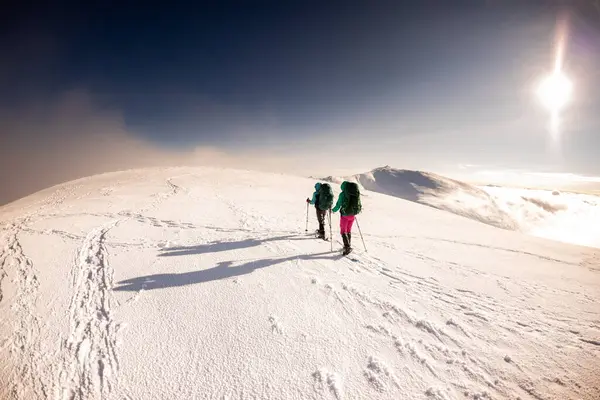
Peak climbing in Nepal is an adventurous yet challenging sport. There are many things that the climbers should consider while attempting this adventure. Among many things, one of the most important things to know is an expert’s advice. Those personnel who have successfully climbed the towering peaks of Nepal many times are known as experts. Some of the experts who have climbed the peaks of Nepal Multiple times are:-
- Kami Rita (Holds the record for climbing the most number of peaks above 8000 meters)
- Nirma Purja (Holds the record for climbing 14+ peaks of 8000 meters all around the world)
- Sanu Sherpa (Holds the record for climbing all the world’s 14 peaks over 8,000m, not once, but twice)
- Ang Rita (received a Guinness World Record in 2017 as the only person in the world to have climbed to the summit of Everest 10 times without supplementary oxygen between 1983 and 1996)
- Purnima Shrestha (fastest Nepali woman to climb 7 peaks above 8000 meters)
These experts give very wise advice for beginners and climbers who don’t have much experience in climbing mighty peaks. Record holder Nirmal Purja says “Look, the advice is that you should be drinking a lot of water each day,” For physical workout “Even when I’m in the mountains I have those bands and military burpees are a really good workout for your cardio, biceps, chest.”
For more information and advice from Nirmal Purja, you can watch the famous Netflix documentary 14 Peaks: Nothing is Impossible. This documentary shows Purja’s extraordinary feats detailed advice and conversation with his team in very mindblowing visuals. This documentary can be very beneficial to individuals who aspire to attempt Peak Climbing in Nepal.
Similarly to Nirmal Purja, Purnima Shrestha fastest Nepali woman to climb 7 peaks has been an inspiration for many such young women and men alike. Shrestha says “As a woman with a diminutive physical frame, many sponsors don’t think I fit the bill of what a mountaineer ought to look like, and they immediately second guess my ability,” says Shrestha. “I might not be the strongest mountaineer out there, but I’m the most passionate one, and I didn’t come to where I am today to just give up on my dreams.”
Shrestha has proven that having physical knowledge as well as mental strength is equally important for peak climbing in Nepal. Being a woman doesn’t limit you to greater things. Shrestha is a great example of having the courage and will to make it to the top can surely get you to it. Motivation and encouragement can be the way to overcome challenges that come your way. “The expedition tested me immensely, but I feel fortunate that the Sherpa that was assigned to me always kept on motivating and encouraging me,” says Shrestha.
Nirmal Purja and Purnima Shrestha are very few of the many who have climbed many peaks of Nepal. Many such legends have accomplished such feats and have become an example and role model for many young climbers.
In conclusion, Peak Climbing in Nepal is an extraordinary feat to achieve. It offers thrilling adventure amidst the mighty Himalayas. There are many success stories as well as examples of failure. Being motivated by success stories is as important as learning from failures. With proper planning and preparation, Peak Climbing in Nepal is open to all and everyone. Peak climbing in Nepal promises to be an experience of a lifetime for those who prepare properly and have an adventurous attitude. You’ll leave with priceless memories and a profound appreciation for the breathtaking majesty of the world’s tallest mountains.

